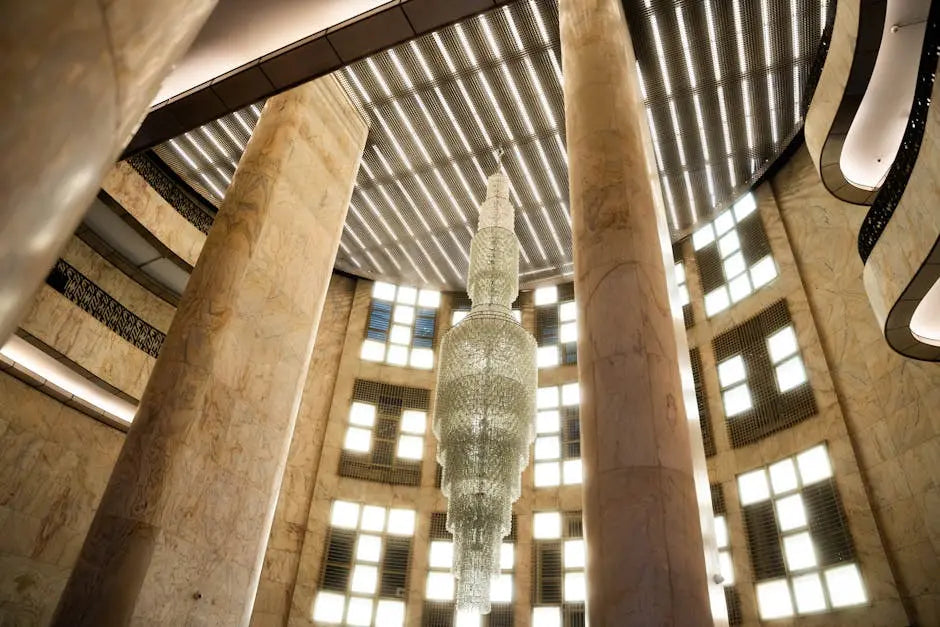My Cart
Your Cart is Currently Empty
FREE SHIPPING ON ALL ORDERS ABOVE $500


Alabaster stone is a beautiful and versatile material revered for its unique properties. If you’re curious about what makes this stone stand out, read on to explore its distinct characteristics.
Alabaster stone is a fine-grained, translucent form of gypsum or calcite, used in sculpture and decorative pieces. Its soft texture and ability to let light through set it apart from other stones.
The use of alabaster dates back to ancient times, as its enduring allure has fascinated artisans across ages. Its name, derived from a Greek term meaning ‘a vessel without handles,’ reflects its early use in creating elegant perfume containers among ancient civilizations. The aesthetic appeal of alabaster is such that you can find it in antique Egyptian artifacts and as a favored medium among Renaissance artists.
Modern sculptors and artisans embrace alabaster for its perfect harmony of beauty and pliability. At Robin Antar, artisans harness alabaster’s qualities to craft evocative and expressive forms, adding to its timeless narrative.
One of the most striking properties of alabaster is its translucency. This allows it to glow softly when backlit, making it a popular choice for lamps and light fixtures.
Alabaster’s distinct ability to diffuse light evenly creates an enchanting effect in any piece it adorns. The beauty of light dancing through alabaster was historically utilized in the creation of windows, such as those in medieval churches. Notably, Notre Dame de Los Angeles incorporated alabaster to achieve its ethereal ambiance when filtering light.
Alabaster’s softness makes it easy to carve and shape, making it a preferred material for sculptors. However, this also means it’s more susceptible to damage if not handled carefully.
Due to its Mohs hardness rating of 1.5, alabaster can be easily scratched or damaged, necessitating cautious handling. Artists and craftsmen often wear gloves when working with alabaster, appreciating its responsive nature that allows for intricate detail and delicate forms. While alabaster may be delicate, the detailed stone carving it allows is unparalleled.
While typically white, alabaster can exhibit a range of colors and veining, providing visual interest and uniqueness to each piece.
The range of hues found in alabaster—from milk-white to soft creams and rich auburns—makes it a versatile addition to any designer’s palette. Each piece’s distinct veining and grain speak to alabaster’s natural beauty, offering aesthetic appeal treasured in interior design and decor applications.
At Robin Antar, the rich variety in alabaster is creatively explored in the ‘Sinuous Figures’ collection—each piece a testament to the intricate beauty captured in alabaster. The natural stone’s ribbon-like textures are showcased beautifully, creating one-of-a-kind artworks.
Alabaster has been used for centuries in various cultures, from ancient Egyptian artifacts to Renaissance sculptures, known for its timeless appeal and elegance.
The heritage of alabaster is rich and steeped in artistry. Art from ancient Egypt, such as the renowned Statue of Queen Tiye, exemplifies the skill used to capture alabaster’s delicate beauty. Fast forward to the Renaissance, and alabaster was a favored medium, often transforming raw stone into breathtaking works of art both religious and secular.
In modern times, the historical allure continues to inspire, with pieces created with alabaster offering a tangible link to past traditions while simultaneously embracing contemporary designs. Explore our extensive collection and let the alluring alabaster art inspire you.
Alabaster stone’s unique qualities make it a cherished material in the world of art and architecture. Its translucency, workability, and aesthetic appeal continue to captivate and inspire creators worldwide.